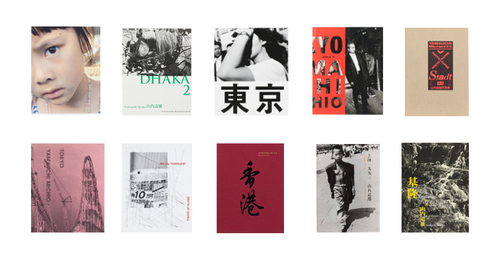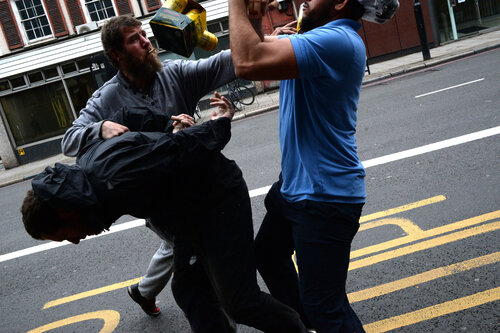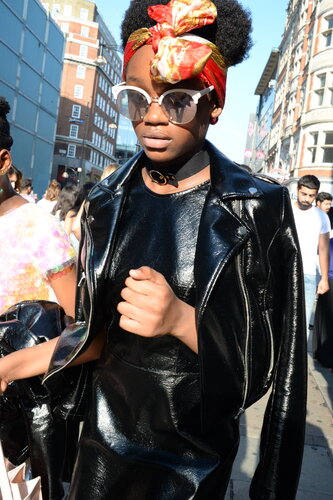Michio Yamauchi
With his black-and-white photography from the streets of Tokyo, Japanese photographer Michio Yamauchi has built a comprehensive and illustrative catalogue of the characters, situations and conditions that define the streets in Japan’s capital. However, over the years Yamauchi expanded his photography to include regions other than those familiar to him, earning him – among other major awards and nominations – the 35th Domon Ken Award in 2015 for the series “Dhaka 2”, photographed in Bangladesh, as well as the 20th Tadahiko Hayashi Award in 2011 for Keelung, photographed in Taiwan.

Yamauchi’s first notable photography exhibition took place in 1982, shortly after graduating from Tokyo School of Photography – the venue being a certain “Image Shop CAMP,” the workshop-slash-gallery space founded and run by the likes of Daido Moriyama, Keizo Kitajima, Seiji Kurata and more.
According to Yamauchi, the “LONDON” project begun after Mark Pearson from Tokyo-based Zen Foto Gallery (which exhibited and published some of Yamauchi’s series in the past) suggested photographing in the city, since “nobody photographs London.”
“I tried photographing in London the same way I would photograph in Tokyo, but – perhaps because my eyes weren’t used to the city at all – there inevitably was a difference compared to my Tokyo photographs,” says Yamauchi. “My body and eyes were not familiar with London, and I drifted towards the perspective of an outsider, a passenger.”
In the photographs (exhibited at Zen Foto Gallery between August 9–31, 2019, and published in the photobook “LONDON”), Yamauchi gets in close, captures odd moments as well as seemingly premeditated portraitures, often with direct eye-contact to his subjects. Despite the difference in Yamauchi’s approach (“Tokyo local” vs. “London visitor”), the images in his series add up to varied, atmospheric snap-shot of London, its streets, and Yamauchi’s experience of them. Compared to Yamauchi’s projects in other (Asian) cities, the amount of time he spent becoming familiar with London was limited as well – whereas he usually visits locations twice, for three months each, the London photos were all taken during his first and only three-month visit.


Beginning with “Banko” and “TOKYO 2016-2017” in 2017, Yamauchi, who had focused on black-and-white photography for the majority of his career, has started to publish works in color. LONDON, too, is composed entirely of color photographs.
“There is no difference in how I approach color photography or monochrome photography. Monochrome photographs allow you to simplify the subject, as they’re composed entirely out of light and shadow.”
“Colors change depending on the day, and the way colors are perceived differs from person to person. photographs captured London’s colors as the city showed them to me.
Both monochrome and color photos are, in the end, results of the photographic process. They’re both interesting in their own unique way.”
At almost 70 years of age, Yamauchi still keeps innovating and developing his approach to photography. His adoption of color – essentially adding a new dimension to his photography – has allowed him to show London as a city that is alive and full of character. Let’s hope “LONDON” was not his last visit to Europe.